

|
|
|
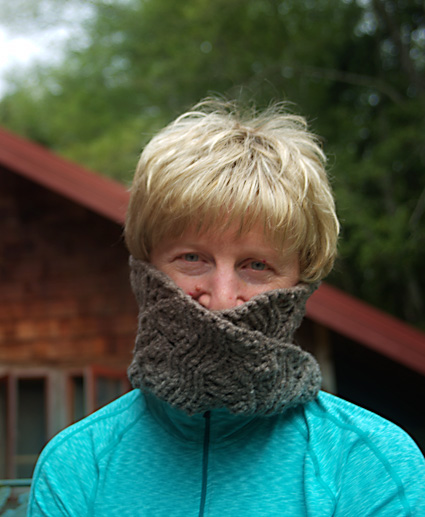
Viburnum is a family of shrubs highly variable in form, but universally easy to grow. There are Viburnums for every season, and almost every climate. Most have showy flowers, many have bright berries in the fall, some are deliciously fragrant, but their primary value in the garden is as a reliable background element. Varieties can be so different in size, leaf shape, and coloration that you might never recognize them as cousins, but they all share a carefree habit and a certain grace of form. This pattern is similar to its namesake in that it uses the same chart and basic moebius construction to make very different neck wraps. The chart is reversible and blends seamlessly across the central cast-on of the moebius so the cast-on disappears into the pattern, showcasing the one-sided nature of the moebius design. I have worked it in three weights of handspun: a single-ply lavender DK weight silk/merino blend, a two-ply bulky grey handspun Romeldale wool, and a spindle-spun violet beaded laceweight pygora/polwarth/silk plyed with commercial silk thread. This is only the beginning of the possibilities, however; Viburnum can be adapted to any length or size of moebius and any weight of yarn to good effect. |
||
|
|
||
|
SIZE |
|
|
FINISHED MEASUREMENTS |
Bulky (shown above) Fiber: Finished Yarn: Commercial Yarn Alternative 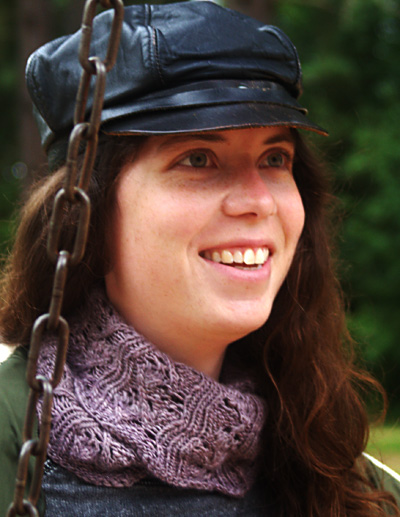 Fiber: Finished Yarn: Recommended needle size [always use a needle size that gives you the gauge listed below -- every knitter's gauge is unique] Laceweight (shown below)
Recommended needle size [always use a needle size that gives you the gauge listed below -- every knitter's gauge is unique]
Tools |
|
GAUGE |
Bulky DK Laceweight |
|
PATTERN NOTES |
|
Video tutorials: Lace bind-off: Note that the stitch count changes through the charts.
|
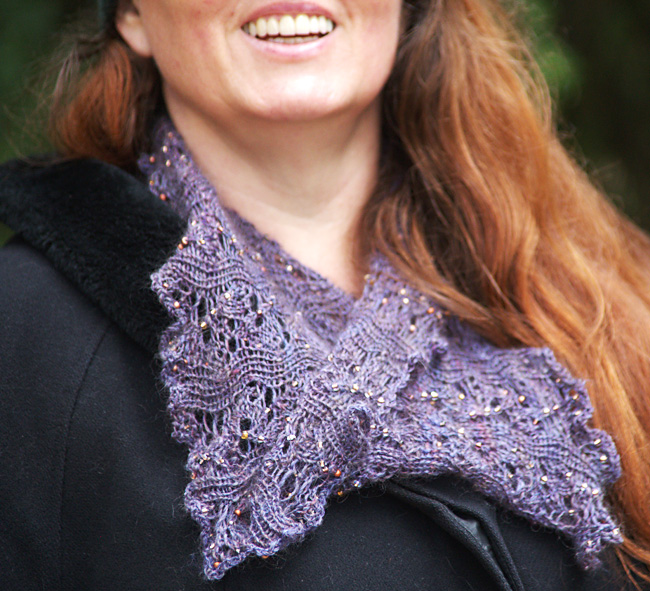
|
|
DIRECTIONS 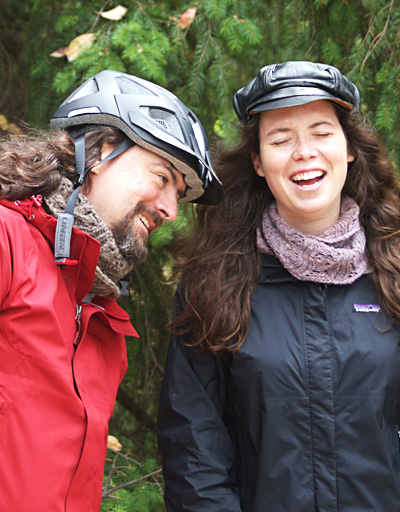
Using size 11[6, 4] / 8[4, 3.5]mm needles, cast-on 66[88, 132] stitches using moebius cast-on, placing a marker every 22 stitches. You will have 132[176, 264] stitches in total, half on the needle and first loop of the cable, and half on the other. Spread the stitches around the needle and arrange the loops so they cross only one time. If there are not enough stitches to comfortably spread around the cable you may make a third loop without stitches to take in some slack. This video may help. Note that the stitch count for this chart varies from row to row. The odd numbered rows have 24 sts, while the even numbered rows have 22. You cast-on 22 stitches for each repeat, but after the first round you will have 24 sts on the needle for each repeat. After 3[4, 6] repeats of the chart you will encounter the slip-knot which began the cast-on. Place a marker and continue working the chart around. Note that you are now knitting one half stitch off the columns established by the first half-round; effectively knitting into the "bottoms" of the stitches as if you were picking up from a provisional cast-on. This may look a bit odd for the first row but will blend nicely as you continue to work as long as you are careful not to twist stitches. After an additional 3[4, 6] repeats you will encounter the marker for the start of the round. Continue, working the chart as set. For the Laceweight version only, place beads as noted on chart; otherwise work stitches as indicated on chart. Continue as established, until you have completed 2[3, 3] full repeats of the chart. Laceweight version only: Bulky, DK versions: |
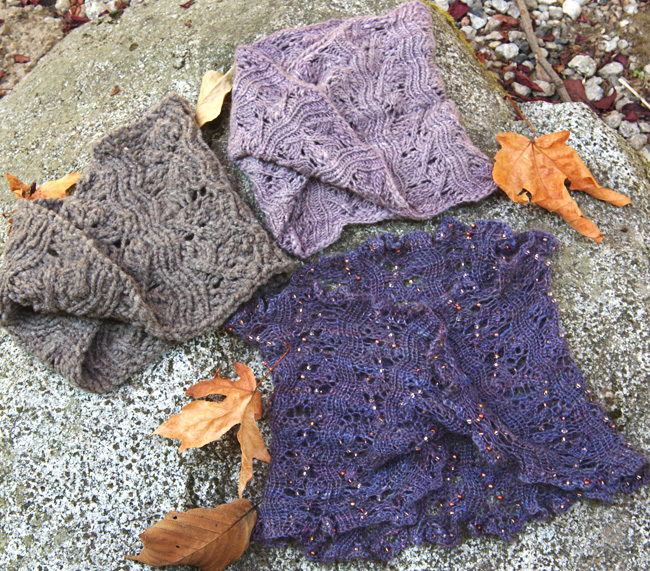
|
|
FINISHING Bulky and DK versions: Laceweight version: Allow to dry completely before removing cord and pins. |
| ABOUT THE DESIGNER |
|
|
|
Pattern & images © 2014 Jennifer Leigh. Contact Jennifer |